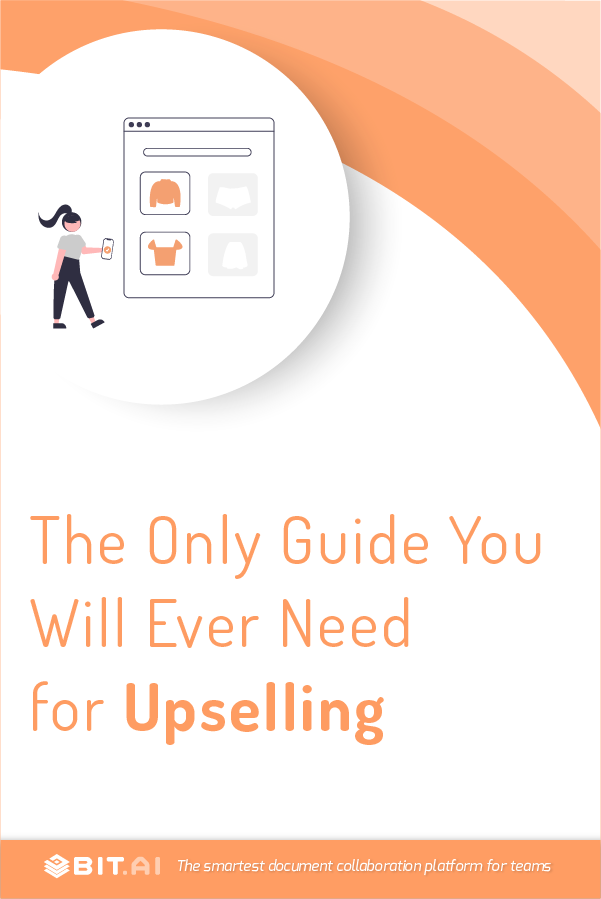There comes a point when all companies have to find different marketing strategies to reinvent themselves in order to make more sales.
Upselling and Cross-Selling are two of the most effective marketing techniques or strategies that are used by most online retailers nowadays.
Upselling can help you boost your sales figures with relatively less marketing effort. Your job as a company is to show upgrades that are relevant to the customers at the right place and at the right time.
If executed well, upselling builds good relationships and helps to increase your revenue and sales but if done poorly, you can come across as an aggressive salesperson.
In this article, we’ll be mainly talking about Upselling, the difference between upselling and cross-selling, its importance, and some of the tips for upselling.
What Exactly is Upselling?
Upselling is a sales technique wherein the sales representative aims at persuading the customers and emphasizes on purchasing an expensive, upgraded, or premium version of the item already chosen by customers OR other fancy additions to the product just for the purpose of making a greater sale.
The main aim of upselling is to increase the total sale and by presenting customers with options that might cater to their needs in a much better way. Upselling can also increase the usefulness or functionality of the product.

Upselling helps to create a bond with the customers by showing them what the company has to offer and how they can get maximum functionality for the money that they have spent and for the product that they have purchased by showing the customers that you are fully invested in their interests and needs.
Besides offering the upsell during the time of purchase, you should also consider using other marketing techniques like mail, newsletters, etc. to keep your customers informed and up to date about the new products.
Difference Between Upselling and Cross-Selling
Upselling and Cross-selling are considered to be two of the most effective techniques of marketing. Many businesses often combine upselling and cross-selling techniques in order to increase the value of the product and to generate maximize profit.
Even though their main objective is to make as many sales as possible, these two techniques are quite different from one another. Here are a couple of the differences between upselling and cross-selling:
1. In upselling, the sales representative persuades the customers to buy a premium version of the product that has already been selected by the customer, to increase the sales revenue.
On the other hand, cross-selling is a selling technique where the sales representative encourages the buyer to spend an additional amount of money to buy complementary products in addition to what they have already decided to buy. This is done so as to expand the sales, along with increasing the total sales value.
2. Upselling aims at increasing the actual value of sales, whereas cross-selling focuses more on increasing the overall value of sales.
3. Upselling involves selling upgraded items to the customers. Whereas, in the case of cross-selling, complementary items, similar to the original ones are offered.
4. Upselling helps to boost the average bill value. On the contrary, not only does cross-selling increase average bill value but also average ticket size.
Read more: Social Proof: 8 Ways to Use it to Get More Sales!
3 Reasons Why Upselling is Beneficial
When executed correctly, sales techniques can improve the customers’ shopping experience. Sellers heavily rely on upselling because:
1. Builds a Deeper Bond Between The Retailers & Customers
Upselling is not foul play or a way to fool the customers. If you see it from a different perspective, it can be seen as a win-win situation.

Upselling focuses on helping the customers win as well, by offering upgrades to the products that will add more value and eventually make them feel like they got the better deal for the items that they purchased.
In a way, it can turn out to be a tactic that ensures the customer’s happiness and also generates additional revenues.
2. Maintain the Customer Lifetime Value (CLV)
Customer Lifetime Value is the contribution a customer makes to your company over time by being loyal and giving your company profits.
You can differentiate your customers into three main categories: nonprofitable, profitable, and very profitable. Having a higher CLV and customers being loyal to you means each customer is capable of generating more revenue for your business without you actually having to put in more effort.
That means, your company would have more time and money to spend on acquiring brand new customers. Upselling can be considered to be one of the most effective ways to turn customers into profitable assets and make sure that they keep coming back.
3. Customers Tend to Come Back For More.
Upselling is a unique technique in the way that it adds more value to the customers that eventually makes them want to come back for more.
By creating an easy way to make the shopping process and experience effortless and better for customers, you are ensuring that they will return in the near future if they need more of what you are offering.
Make sure that you provide great customer service along with your upselling efforts to ensure happy customers no matter what happens.
7 Powerful Tips for Upselling
Upselling is an essential part of any sales plan and if you are an eCommerce retailer, you have to be extra cautious and strategic in the way you execute it. Here are some of the upselling tips to get you started:
1. Cater to your audience’s needs
Upselling, if not done in the correct manner, can eventually affect your sales in the end.
According to a study done in 2015, when sales agents focus more than needed on upselling, they can be able to double their success rate, but also at the same time, the chances of their customers choosing their company in the future will go down by 5.5%.
One of the most helpful ways to know whether your upsell recommendations are helpful or not is to make sure that they are for products or services you know for sure your customers are interested in.

Don’t attempt to sell your most expensive product as the first thing to everyone who comes across your site—focus on the ones you think the customers will actually want.
Read more: 15 Sales Tactics to Generate High-Quality Leads!
2. Demonstrate the value of the product before making the pitch
Even after you come to the conclusion about whether an upsell or cross-sell offer makes sense for your customer, your work isn’t done yet.
You need to make sure that you are able to demonstrate the value of the additional product or service and how it will benefit and bring about a change in your customers’ lives.
You can refer to things like customer case studies, testimonials, and even positive customer reviews to show your customers how the additional product you’re pitching will be beneficial to them.
3. Give the customers a chance to choose between prices
Customers like the option of choosing between prices, and like the feeling of getting a deal. “Price anchoring” is a technical term used for when a company sets a benchmark of how much a particular thing should generally or usually cost, then offer a deal that lowers that pricing, influencing the buyers into thinking that they’re getting something special.
It works well especially with subscription plans or service plans when you want to influence the customers into buying more. You can upsell to them by showing them that if they’re willing to opt for a plan which is of a longer duration, they’re actually getting more in return for their money.
4. Provide free shipping
Upselling is all about getting your customers to enhance and improve their current purchase. A better and easy way to encourage them to do that is to give them a target to clear for some kind of payoff.
Free shipping is an example of said payoff that’s fairly simple to carry out and one that’s pretty essential and necessary in today’s competitive market. It has a big influence on customers!
5. Offer alternatives or substitutes for the items that sold out.
If a customer is already on your website checking out your products then you’re almost halfway there to make a sale but don’t drive the customers away by being out of stock for the item that they’re looking for.
Instead, offering an item that is a little more expensive yet similar to the one they were originally looking for is a great way to get an upsell out of them.
6. Implement product warranty and customer protection.
Providing a customer protection plan and a warranty to the customers is a great way to upsell. Not only does this offer the customers something helpful and provides a better customer experience but also increases the CLV.
7. Stack all the products to upsell them together.
If you want your customers to opt for a rather expensive product, you can incentivize them by making it seem like a deal.

You can do this by giving a certain percentage off on a purchased product if the customer is willing to buy the whole set of said products.
Conclusion
There is no rule that you have to limit yourself to just of these upselling tips, you can combine multiple upselling strategies and implement them so as to increase your average order values.
It’ll also help you understand your audience in a much better way and you will be able to find your target audience more effectively.
Got any questions? Tweet to us @bit.ai. We’d be happy to hear from you!
Further reads:
Sales Pitch: What is it & How to Create a Killer One?
35+ Powerful Selling Words & Phrases for Your Product and Services
10 Best Sales Tools For Prospecting in 2022
Price Skimming: Definition, 3 Types of Phases, Pros & Cons!
9 Sales Collateral Examples You Should be Using in 2022
12 Sales KPIs Your Sales Department Should Measure!
Sales Tracker: What is it & How to Create One? (Template Included)
16 Sales Trends to Keep an Eye on This Year!



